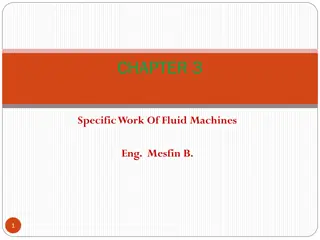
Reviewing Limitations and Exploring Possibilities in Data Collection
Explore the factors affecting data reliability, such as time, site, scope, and data collection methods, in order to understand the limitations and possibilities in data collection. Consider the impact of inappropriate timing, geographical settings, sampling scale, and survey methods on data quality. Take a closer look at observational assessments and field surveys to avoid common pitfalls in data collection practices.
Download Presentation

Please find below an Image/Link to download the presentation.
The content on the website is provided AS IS for your information and personal use only. It may not be sold, licensed, or shared on other websites without obtaining consent from the author. If you encounter any issues during the download, it is possible that the publisher has removed the file from their server.
You are allowed to download the files provided on this website for personal or commercial use, subject to the condition that they are used lawfully. All files are the property of their respective owners.
The content on the website is provided AS IS for your information and personal use only. It may not be sold, licensed, or shared on other websites without obtaining consent from the author.
E N D
Presentation Transcript
Contents 1. Reviewing limitations 2. Exploring other possibilities
1. Reviewing limitations A. Factors affecting data reliability i. Time Collecting data at an inappropriate time may affect the measurement results E.g. conducting a fieldwork on fluvial processes in dry season will make it difficult to collect sufficient data due to a lack of discharge Contents Contents
1. Reviewing limitations A. Factors affecting data reliability ii. Site The geographical settings of the study site may affect the measurement results E.g. the data about waves will be affected by various environmental factors, such as beach gradient and man-made facilities Contents Contents
1. Reviewing limitations A. Factors affecting data reliability iii. Scope (Sampling scale) If the study scope (sampling scale) is too small, the data collected will lack representativeness Contents Contents
1. Reviewing limitations A. Factors affecting data reliability iv. Data collection methods Questionnaire surveys Quota sampling is commonly used in questionnaire surveys However, sampling bias may occur as the researcher chooses the respondents in a subjective manner Contents Contents
A. Factors affecting data reliability >> iv. Data collection methods 1. Reviewing limitations Observation (Assessment) Subjective judgement of the researcher causes data difference Other reasons for the differences in data: Differences in time, sites or frequencies of data collection Misinterpretation of scoring criteria or wrong calculations Different opinions among group members Contents Contents
A. Factors affecting data reliability >> iv. Data collection methods 1. Reviewing limitations Field surveys Improper use of instruments will lead to measurement errors Common scenarios of improper use of instruments: Use instruments of different brands and models Not calibrate the instruments before measurements Not operate the instruments under an appropriate environment Take the record before the reading becomes stable Contents Contents
1. Reviewing limitations B. Ways to raise data reliability Ways to raise fieldwork data reliability Factor affecting fieldwork data reliability Way to raise fieldwork data reliability Choose a suitable time to conduct the fieldwork according to the fieldwork topic Time Choose a suitable site to conduct the fieldwork according to the fieldwork topic Enlarge the scope of study Increase the sampling scale Site Scope (Sampling scale) Data Adopt a more objective sampling method Questionnaire surveys collection methods Contents Contents
1. Reviewing limitations B. Ways to raise data reliability Ways to raise fieldwork data reliability Factor affecting fieldwork data reliability Way to raise fieldwork data reliability Compromise the time, sites and frequencies of data collection Compromise the scoring criteria before conducting the fieldwork Different group members collect data at the same site Take photos for record Adopt more objective data collection methods, e.g. using instruments for measurements Data Observation (Assessment) collection methods Contents Contents
1. Reviewing limitations B. Ways to raise data reliability Ways to raise fieldwork data reliability Factor affecting fieldwork data reliability Way to raise fieldwork data reliability Read the user manuals to ensure the instruments are operated correctly Check and try out the instruments before measurements to ensure they work properly Use the same brand and model of instruments Calibrate the instruments before measurements Take measurements under appropriate environments Record after the reading becomes stable Data collection methods Field surveys Contents Contents
2. Exploring other possibilities A. Further studies on the same theme We can choose the part that we are most interested in for further studies E.g. river study Main focus of the study: channel velocity We discover that channel velocity affects various features in different sections of the river It is possible to conduct a further study on these features, e.g. the roundness of loads in different sections of the river Contents Contents
2. Exploring other possibilities B. Investigating the feasibility of other fieldwork topics For Example: Lam Tsuen River The sketch map below shows parts of the Lam Tsuen River, as well as the settlements and farmlands along the river Contents A sketch map of the Lam Tsuen River and its surroundings Contents
B. Investigating the feasibility of other fieldwork topics 2. Exploring other possibilities Other topics to be studied: Pattern and development of agricultural activities along the Lam Tsuen River Urban encroachment and land use changes in the surrounding areas of the Lam Tsuen River Environmental assessment of the Lam Tsuen River area Contents Contents






















